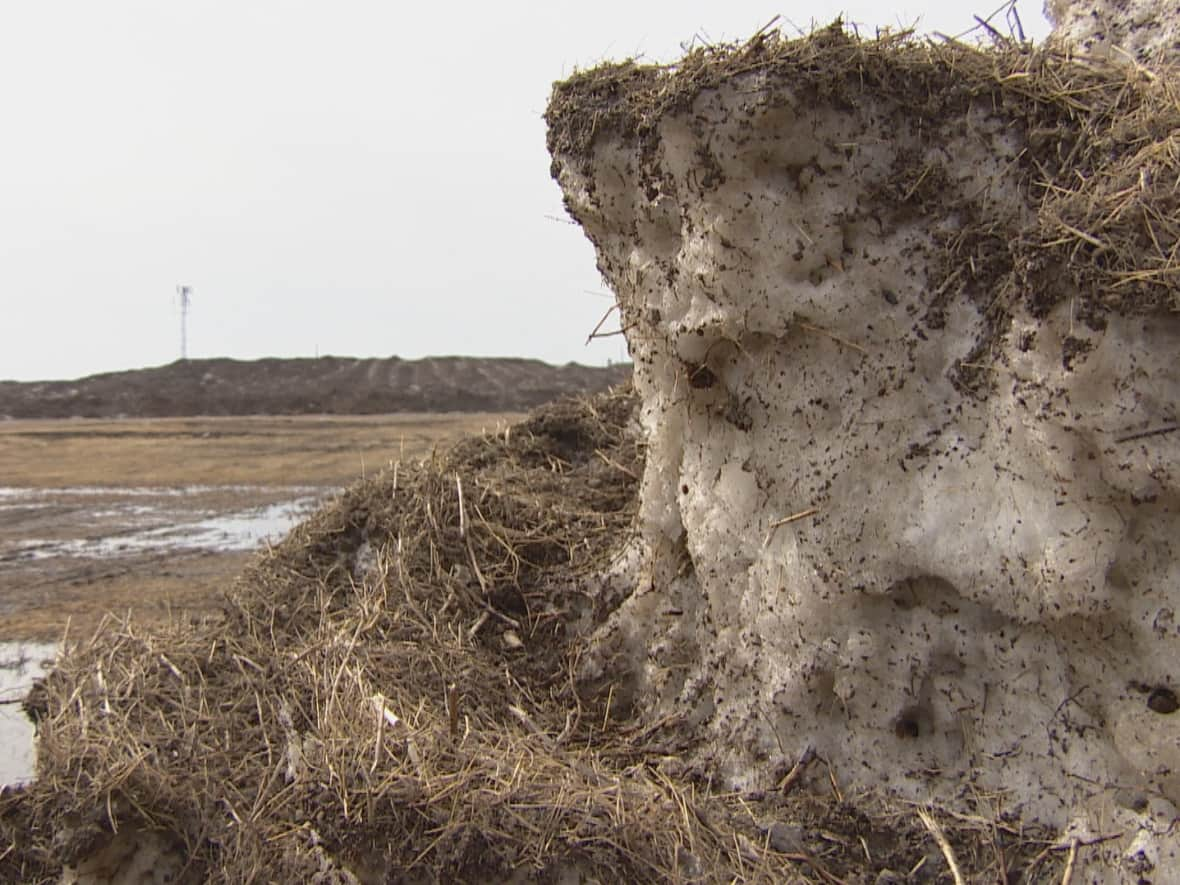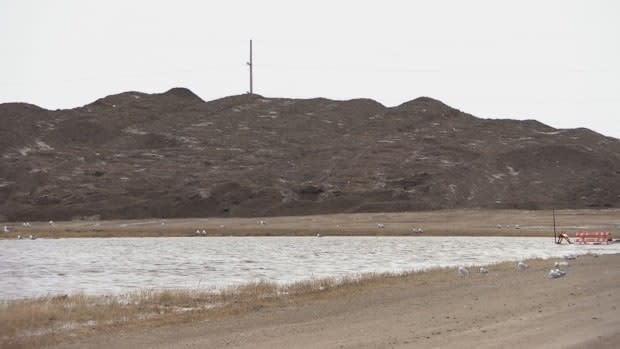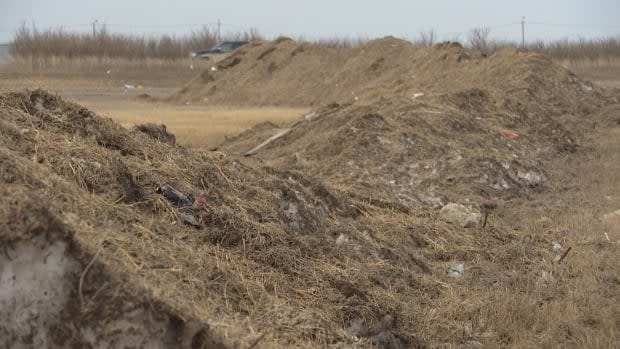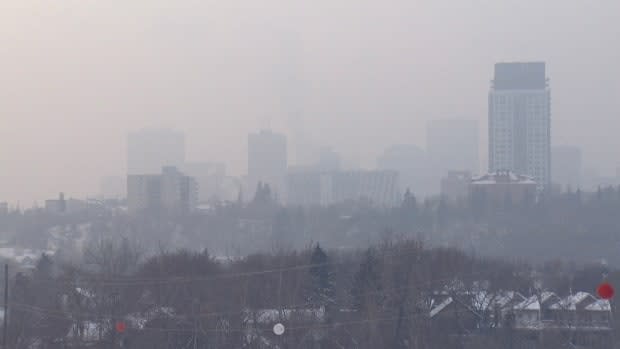Dirty spring snow carries more than dirt. There are also other pollutants we can't see

As the Prairies wait for the latest round of snow from a powerful storm system to melt, other parts of Canada bid farewell to the white stuff a long time ago.
But what is left behind can be more of a pain than the snow itself.
At Regina's snow storage facility, for instance, nearly 24,000 loads of snow are brought to the open plot of land in the city's northeast each winter.
What once were tall, white mountains have now become shrinking piles that look more like dirt.

According to Shelley Wellman, environmental services manager with the City of Regina, that's because there's more than just snow in the piles.
"There's going to be sand, there's going to be a little bit of dirt," said Wellman. "Bits of concrete that might get picked up, garbage that people might have left on the roadways, bits of asphalt."
Research shows there's more pollution in the snow than meets the eye.
WATCH| Tiny pollutant particles that are harmful to humans, environment can get trapped in the snow:
Super absorbent snow
Ubong Eduok, a senior research associate in the department of chemistry at Western University in London, Ont., said even small amounts of snow are very absorbent, because they're formed by extremely porous ice crystals.
While that can be helpful — it can absorb the sounds of loud vehicles, for example — research has shown that snow also absorbs tiny pollutant particles. That includes everything from vehicle exhaust, to metals and plastics, to chemicals and compounds that can be dangerous to humans and the environment.
The pollutants can also change while they sit in the snow, spawning more particles with different levels of toxicity.

Eduok said when the snow melts the pollutants are released and become a bigger problem.
"The pollutants follow the runoff into the oceans or Great Lakes, for instance," he said. "It could evaporate into the atmosphere, or it could percolate and completely pollute the groundwater."
Parisa Ariya, a professor in the department of chemistry at McGill University, has also studied pollutants in snow. She said the snow acts as sort of vehicle for pollution.
"Snow has provided another matrix to exchange [pollutants]," said Ariya.
She said other studies have found pollutants preserved in snow and ice in the Arctic.
In fact, one study found the oil sands contaminated meltwater, making it toxic to larval fish.
Pollution policies needed: Ariya
Ariya's study concluded that more research is needed to identify which pollutants are most harmful and how that information can be used for making better exhaust treatment technologies in vehicles, or improving engines.
She also stressed the need for better pollution policies, especially in cities. She said it's still unknown just how the falling and melting snow impact pollution levels in urban areas.
"It is kind of [a] pity because … cities are the place that more than 50 per cent of all greenhouse gasses are produced and emitted," she said.

Pollution in the winter isn't just limited to snow and ice. Temperature inversions, where warm air creates a sort-of cap on the lower atmosphere, can trap pollutants and reduce air quality — similar to what was seen around Edmonton earlier this year.
At Regina's snow storage site, Shelley Wellman said the city has a process to test for certain pollutants, including metals and chlorides from road salt, to see if the snow has an impact on the soil.
There isn't currently a way to prevent pollutants from getting into the snow, but Wellman said there haven't been soil issues detected. Larger pieces of garbage are usually collected and taken to the landfill once the piles have melted, she said.
While the team at McGill continues to study the impact this is all having on air pollution and our climate, there's a good chance the snow banks in backyards across the country are hiding more than just left over plastic bags and face masks.


